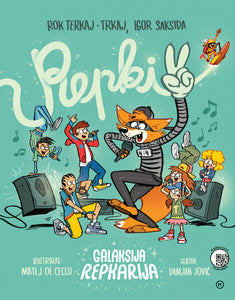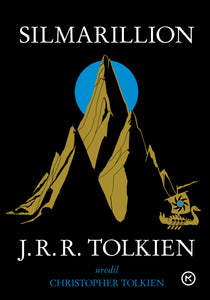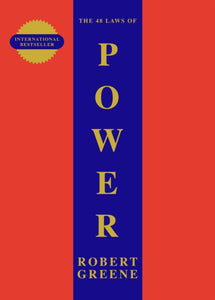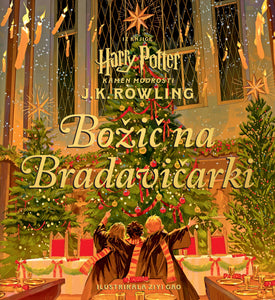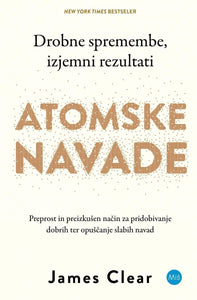Introduction to Computing and Programming in Python, a Multimedia Approach
Introduction to Computing and Programming in Python, a Multimedia Approach
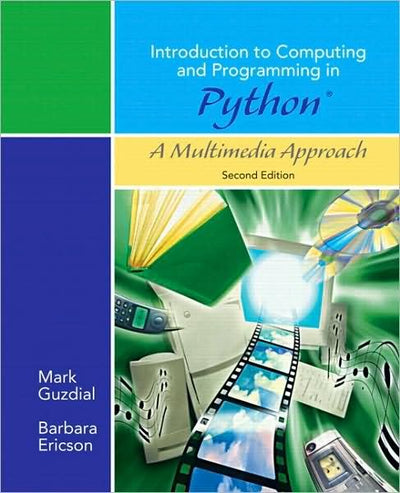
MARK J. GUZDIAL
Introduction to Computing and Programming in Python, a Multimedia Approach
Zaloga po trgovinah
Rezultati:
Podrobnosti o izdelku
Poglej vseISBN
9780136060239Mladinska knjiga ID
401540Leto izida
2009Datum izida
28.08.2009Velikost (šxdxv)
150 × 200 × 10Status dobavljivosti
Na zalogi pri dobaviteljuJezik
ANGZaložnik
PRENTICE HALL EUROPEAvtor
MARK J. GUZDIALOpis
For courses in Introduction to Computing or Introduction to Programming. There is a growing interest in computing for non-CS majors, or for students who have not yet determined their majors (sometimes called the "CS0" market). Computer science professors are also confronted with increased attrition and failure rates. Guzdial introduces programming as a way of creating and manipulating media--a context familiar and intriguing to today's students. Students begin actual programming early on (sometimes over 100 lines of code in the second assignment). Guzdial's approach has met with substantial success in class testing. Access updated student resources (previously available on CD) at https://coweb.cc.gatech.edu/mediaComp-teachI. Introduction Chapter 1 Introduction to Computer Science and Media Computation 1.1 What Is Computer Science About? 1.2 Programming Languages 1.3 What Computers Understand 1.4 Media Computation: Why Digitize Media? 1.5 Computer Science for Everyone 1.5.1 It's About Communication 1.5.2 It's About Process Chapter 2 Introduction to Programming 2.1 Programming Is About Naming 2.1.1 Files and Their Names 2.2 Programming in Python 2.3 Programming in JES 2.4 Media Computation in JES 2.4.1 Showing a Picture 2.4.2 Playing a Sound 2.4.3 Naming Values 2.5 Making a Program 2.5.1 Variable Recipes: Real Math-like Functions That Take Input II Pictures Chapter 3 Modifying Pictures Using Loops 3.1 How Pictures Are Encoded 3.2 Manipulating Pictures 3.2.1 Exploring Pictures 3.3 Changing Color Values 3.3.1 Using Loops in Pictures 3.3.2 Increasing/Decreasing Red (Green, Blue) 3.3.3 Testing the Program: Did That ReallyWork? 3.3.4 Changing one Color at a Time 3.4 Creating a Sunset 3.4.1 Making Sense of Functions 3.5 Lightening and Darkening 3.6 Creating a Negative 3.7 Converting to Grayscale Chapter 4 Modifying Pixels in a Range 4.1 Copying Pixels 4.1.1 Looping Across the Pixels with range 4.2 Mirroring a Picture 4.3 Copying and Transforming Pictures 4.3.1 Copying 4.3.2 Creating a Collage 4.3.3 General Copying 4.3.4 Rotation 4.3.5 Scaling Chapter 5 Advanced Picture Techniques 5.1 Replacing Colors: Red-Eye, Sepia Tones, and Posterizing 5.1.1 Reducing Red-Eye 5.1.2 Sepia-Toned and Posterized Pictures: Using Conditionals to Choose the Color 5.2 Combining Pixels: Blurring 5.3 Comparing Pixels: Edge Detection 5.4 Blending Pictures 5.5 Background Subtraction 5.6 Chromakey 5.7 Drawing on Images 5.7.1 Drawing with Drawing Commands 5.7.2 Vector and Bitmap Representations 5.8 Programs as Specifying Drawing Process 5.8.1 Why DoWe Write Programs? Chapter 6 Modifying Sounds Using Loops 6.1 How Sound Is Encoded 6.1.1 The Physics of Sound 6.1.2 Exploring How Sounds Look 6.1.3 Encoding the Sound 6.1.4 Binary Numbers and Two's Complement 6.1.5 Storing Digitized Sounds 6.2 Manipulating Sounds 6.2.1 Open Sounds and Manipulating Samples 6.2.2 Using the JES MediaTools 6.2.3 Looping 6.3 Changing the Volume of Sounds 6.3.1 Increasing Volume 6.3.2 Did That ReallyWork? 6.3.3 Decreasing Volume 6.3.4 Making Sense of Functions, in Sounds 6.4 Normalizing Sounds 6.4.1 Generating Clipping Chapter 7 Modifying Samples in a Range 7.1 Manipulating Different Sections of the Sound Differently 7.2 Splicing Sounds 7.3 General Clip and Copy 7.4 Backwards Sounds 7.5 Mirroring Chapter 8 Making Sounds by Combining Pieces 8.1 Composing Sounds Through Addition 8.2 Blending Sounds 8.3 Creating an Echo 8.3.1 Creating Multiple Echoes 8.3.2 Creating Chords 8.4 How Sampling KeyboardsWork 8.4.1 Sampling as an Algorithm 8.5 Additive Synthesis 8.5.1 Making SineWaves 8.5.2 Adding SineWaves Together 8.5.3 Checking Our Result 8.5.4 SquareWaves 8.5.5 TriangleWaves 8.6 Modern Music Synthesis 8.6.1 MP3 8.6.2 MIDI Chapter 9 Building Bigger Programs 9.1 Designing Programs Top-Down 9.1.1 A Top-Down Design Example 9.1.2 Designing the top-level function 9.1.3 Writing the subfunctions 9.2 Designing Programs Bottom-up 9.2.1 An Example Bottom-Up Process 9.3 TestingYour Program 9.3.1 Testing the Edge Conditions 9.4 Tips on Debugging 9.4.1 Finding Which Statement toWorry About 9.4.2 Seeing the Variables 9.4.3 Debugging the Adventure Game 9.5 Algorithms and Design 9.6 Running Programs Outside of JES IV Text, Files, Networks, Databases, and Unimedia Chapter 10 Creating and Modifying Text 10.1 Text as Unimedia 10.2 Strings: Making and Manipulating Strings 10.3 Manipulating parts of strings 10.3.1 String Methods: Introducing Objects and Dot Notation 10.3.2 Lists: Powerful, Structured Text 10.3.3 Strings Have No Font 10.4 Files: Places to PutYour Strings and Other Stuff 10.4.1 Opening and Manipulating Files 10.4.2 Generating Form Letters 10.4.3 Writing Out Programs 10.5 The Python Standard Library 10.5.1 More on Import andYour Own Modules 10.5.2 Another Fun Module: Random 10.5.3 A Sampling of Python Standard Libraries Chapter 11 Advanced Text Techniques:Web and Information 11.1 Networks: Getting Our Text from theWeb 11.2 Using Text to Shift Between Media 11.2.1 Using Lists as Structured Text for Media Representations 11.3 Hiding Information in a Picture Chapter 12 Making Text for theWeb 12.1 HTML: The Notation of theWeb 12.2 Writing Programs to Generate HTML 12.3 Databases: A Place to Store Our Text 12.3.1 Relational Databases 12.3.2 An example relational database using hash tables 12.3.3 Working with SQL 12.3.4 Using a Database to BuildWeb Pages Chapter 13 Creating and Modifying Movies 13.1 Generating Animations 13.2 Working with Video Source 13.2.1 Video Manipulating Examples 13.3 Building a Video Effect Bottom-Up Chapter 14 Speed 14.1 Focusing on Computer Science 14.2 What Makes Programs Fast? 14.2.1 What Computers Really Understand 14.2.2 Compilers and Interpreters 14.2.3 What Limits Computer Speed? 14.2.4 Making Searching Faster 14.2.5 Algorithms That Never Finish or Can't Be Written 14.2.6 Why Is Photoshop Faster Than JES? 14.3 What Makes a Computer Fast? 14.3.1 Clock Rates and Actual Computation 14.3.2 Storage: What Makes a Computer Slow? 14.3.3 Display Chapter 15 Functional Programming 15.1 Using Functions to Make Programming Easier 15.2 Functional Programming with Map and Reduce 15.3 Functional Programming for Media 15.3.1 Media Manipulation without Changing State 15.4 Recursion: A Powerful Idea 15.4.1 Recursive Directory Traversals 15.4.2 Recursive Media Functions Chapter 16 Object-Oriented Programming 16.1 History 16.2 WorkingWith Turtles 16.2.1 Classes and Objects 16.2.2 Creating Objects 16.2.3 Sending Messages to Objects 16.2.4 Objects Control Their State 16.2.5 Other Turtle Functions 16.3 Teaching Turtles New Tricks 16.4 An Object-Oriented Slide Show 16.4.1 Joe the Box 16.4.2 Object-Oriented Media 16.4.3 Why Objects? APPENDICES A Quick Reference to Python A.1 Variables A.2 Function Creation A.3 Loops and Conditionals A.4 Operators and Representation Functions A.5 Numeric Functions A.6 Sequence Operations A.7 String Escapes A.8 Useful String Methods A.9 Files A.10 Lists A.11 Dictionaries, Hash Tables, or Associative Arrays A.12 External Modules A.13 Classes A.14 Functional Methods Bibliography
Pogosto kupljeno skupaj

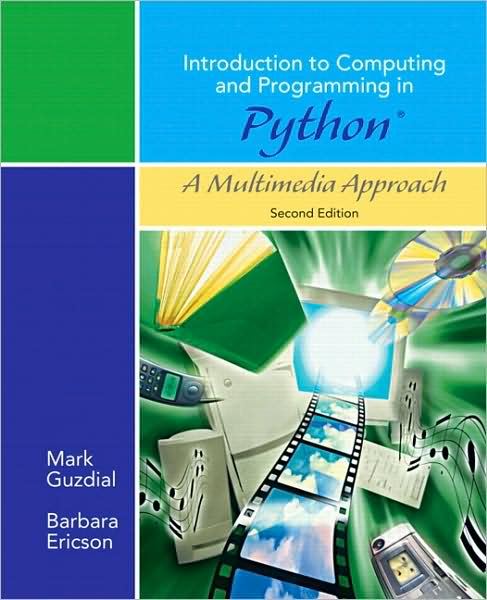
Mehka
Ostali so si ogledali tudi ...


Več kot pol milijona knjig
Največja ponudba slovenskih in tujih knjig na enem mestu.

Enostaven nakup
Do izbranega le z nekaj kliki na spletu ali v eni od več kot 50 knjigarn.
Strokoven nasvet
Pred nakupom nas pokličite za nasvet ali se oglasite v knjigarni.

Vse za šolo
Nagrajena izobraževalna gradiva in kakovostne potrebščine.

Celovita ponudba za dom in pisarno
Vrhunski izdelki priznanih blagovnih znamk.
Brezplačna dostava
Brezplačna dostava za vsa naročila nad 59 € (za šolske pakete nad 140 €)
Knjigarne
Zaloga
×Osveženo 26.03.2023 10:09
Slovenska cesta 29, 1000 Ljubljana
E-naslovSpletna knjigarna: info@emka.si, Mladinska knjiga Založba: info@mladinska-knjiga.si
Kontakt01 241 30 00
Brezplačna številka080 12 05
Prijava na e-novice
© 2025 Mladinska knjiga. Vse pravice pridržane.
- Ko izberete elemente, se celotna stran osveži.
- Odpre se v novem oknu.








